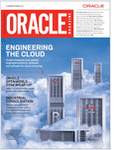1. Which place was the last to celebrate the new millennium on Jan. 1, 2000?
a. Antarctica
b. Russia
c. Hawaii
d. India
2. What happens shortly before midnight, on New Year’s Eve, in Japan?
a. Buddhist temples ring their bells 108 times
b. Buddhist temples wash their steps
c. Buddhist temples light their candles
d. None of the above
3. During fireworks shows, what determines the pattern of a firework explosion?
a. the amount of gunpowder
b. timing of the explosion
c. the arrangement of star pellets inside the shell
d. height of the powder holder
4. Which Roman god had two faces - one looking back on the old year and one looking forward to the New Year?
a. Jupiter
b. Juno
c. Augustus
d. Janus
5. What fruit do New Year’s revelers in Spain eat at the stroke of midnight?
a. Oranges
b. Grapes
c. Pears
d. Apple
6. In Scotland what is the New Year festival called?
a. Hogwash
b. Hogwarts
c. Hogmanay
d. Hug Many
7. On which date is 12th Night?
a. 1st January
b. 2nd January
c. 5th January
d. 6th January
8. Which song, traditionally, is sung at midnight on New Year’s Eve all over the world?
a. Auld Lang Syne
b. White Christmas
c. The Final Countdown
d. Happy New Year
9. In England, what is the name of the bell that rings in the New Year in London?
a. Big Ben
b. Big Bertha
c. Big Bertie
d. Big Bang
10. Where do people congregate to celebrate New Year in New York?
a. The Statue of Liberty
b. Central Park
c. Times Square
d. Empire State Building
11. When do the Chinese celebrate their New Year?
a. On 1st January
b. At the second new moon after the winter solstice
c. On the 11th day of the 11th month
d. First Saturday after Diwali and before 1st January
12. How do the people of Ecuador, South America get rid of their faults for the New Year?
a. They make a straw man and burn it
b. They have a long bath
c. They write them on paper and bury them
13. On the morning of the Vietnamese New Year, called "Tet", what are children not allowed to do?
a. A: Laugh
b. B: Cry
c. C: Sing
14. In Greece kids leave their shoes by the fireside on New Year’s Day so that St Basil will...?
a. Fill them with presents
b. Fill them with sweets
c. Fill them with socks
15. According to tradition, who do families visit on the first day of Chinese New Year?
a. youngest family members
b. extended family members
c. oldest family members
d. friends
16. Under which calendar is New Year’s Day Jan. 1?
a. Julian Calendar
b. Gregorian Calendar
c. Jewish Calendar
d. Chinese Calendar
17. Rosh Hashanah is the beginning of the new year for what religion?
a. Muslim
b. Christian
c. Buddhist
d. Jewish
18. Kwanzaa is a seven-day holiday that begins Dec. 26 and extends through Jan. 1. What does the word mean in Swahili?
a. First fruits
b. First people
c. First days
d. First dance
19. In the Middle Ages most European countries used the Julian calendar, so they observed New Year’s Day when?
a. Feb. 14th
b. March 25th
c. April 1st
d. May 21st
20. When the Tibetan Buddhism celebrate New Year’s?
a. Never
b. January
c. February
d. March
21. What New Year’s gift did ancient Persians give?
a. Money
b. Eggs
c. Cakes
d. Rugs
22. In ancient Egypt what event dictated the timing of New Year’s celebrations?
a. Pharaoh’s birthday
b. Flooding of Nile
c. Solar eclipse
d. Exact alignment of stars with Great Pyramid
Answers:
1. c
2. b
3. c
4. d
5. b
6. c
7. c
8. a
9. a
10. c
11. a
12. b
13. a
14. b
15. c
16. b
17. d
18. a
19. b
20. c
21. b
22. b
Find this quiz at Gujarat Samachar or the hardcopy of the news paper of 31/12/2008.
Wishing you a very progressive year ahead!



